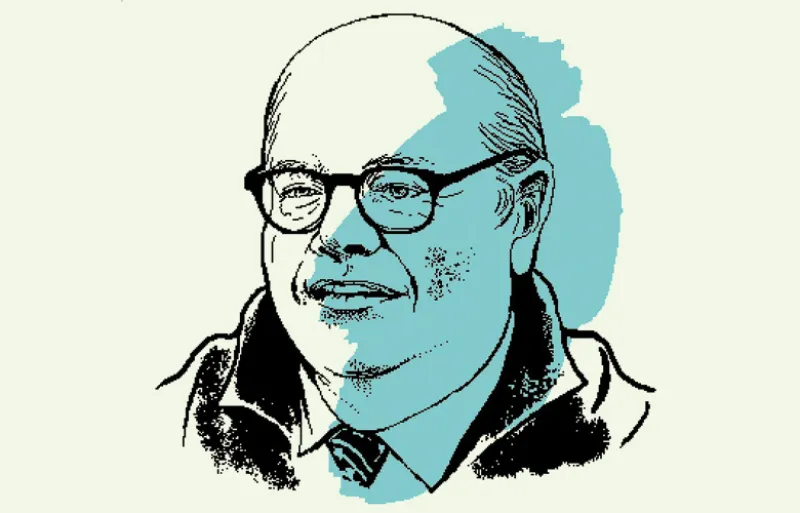Britt Harris’ vision for the future of the University of Texas Investment Management Co. (UTIMCO) is one of “total alignment.”
“Total alignment is our rallying theme for 2018,” Harris says. This is his expectation within the company, on the board, and among both the fund’s clients and its global investment management structure.
Harris, who joined the endowment as chief investment officer and chief executive officer in June, has been working to change UTIMCO’s internal structure through new hires and by encouraging teamwork across his staff. He is pursuing this growth against an economic downturn he expects to arrive in the next two to four years.
Harris took over UTIMCO, which manages $42 billion in working capital and endowment assets, after serving as CIO of the Teacher Retirement System of Texas for more than ten years.
His hiring followed a relatively rocky period at UTIMCO. Bruce Zimmerman, the endowment’s former CEO and CIO, stepped down suddenly in October 2016 after having been on vacation for three weeks. Mark Warner, the former senior managing director and head of natural resources and emerging markets investments, stepped up as interim CIO until Harris came aboard.
At Texas Teachers, Harris’ team introduced a revolutionary fee structure in which the investor receives either 70 percent of performance over a hurdle rate or pays a 1 percent management fee. Harris and his colleagues proposed the 1-or-30 structure to 23 of the fund’s managers, and he says 17 accepted. UTIMCO has been successful implementing a similar fee structure, he adds.
According to Erik Knutzen, Neuberger Berman Group’s multi-asset class CIO, Harris has been able to shift things in the asset management industry. The two men worked together during Harris’ Texas Teachers years.
“He has been a pioneer in changing the relationships between asset managers and asset owners,” Knutzen says by phone. “He will continue to drive improvement in that critical area.”
Since joining UTIMCO, Harris has made a few key staff appointments. These include new deputy CIO Rich Hall, previously private equity chief at Harvard Management Co., and managing director Scott Slayton, most recently of Jamison Capital Partners. Both were hired early in 2018. More new hires are likely to come. As Harris notes, a lot of mid-level and junior positions remain open.
In addition to hiring, Harris plans to focus on building up the existing team.
“The most common practice in investment management is not teamwork, but silos,” Harris argues. “That is highly suboptimal — it’s not aligned, and it hinders long-term results.” He plans to foster teamwork through his total alignment strategy, which encourages everyone involved with UTIMCO to operate on the same page.
“Britt gets the most out of his managers, and as part of that process he makes his managers better,” Knutzen says. “He made me a better investor.”
Harris plans to create “significant, precise action plans” for each department at UTIMCO, which he believes will ensure that everyone is working together for the same outcome. And he vows to vet these plans personally before they are implemented.
UTIMCO’s returns had been roughly on par with its policy performance benchmark, but lagged a 60 percent stock, 40 percent bond benchmark by about 400 to 600 basis points. The fund returned 3.9 percent over one year, 6.3 percent over three years, and 6.2 percent over five years, according to the 2016 annual report.
UTIMCO’s returns have been strong over the years. Since 2010, according to Harris, the size of its endowments has doubled, while in 2017 alone the endowments grew by $6 billion.
But he doesn’t expect things to always be rosy for UTIMCO. “We’re thoroughly enjoying this boom cycle right now,” he admits. “We’re very pleased with the performance of the portfolio, but we also know that Mr. Market is a beast and at some point — probably within the next two to four years — we’ll have at least a regular drawdown in the market.”
With that in mind, UTIMCO has stopped adding to its private equity portfolio.
Another way he plans to weather a downturn: energy assets. The endowment’s upstream energy-related investments returned roughly 27 percent in 2017 for UTIMCO.
UTIMCO is uniquely positioned to be investing in the energy sector. According to Harris, the endowment owns two million acres of Permian Basin properties, which produce oil and gas. Harris says UTIMCO receives up to around $1 billion each year from these holdings. And he believes that energy prices have bottomed.
Harris is working to establish a professional organization to “optimize the management” of the Permian Basin properties. UTIMCO is also evaluating its correlated energy investments to determine whether there’s any sort of redundancy in its portfolio.
As for newer technologies, like Bitcoin and blockchain? Harris believes that there will eventually be a use for cryptocurrencies, but he isn’t rushing to get UTIMCO invested. “There will be electronic currencies, but they won’t replace the almighty dollar. There’s a long road ahead for cryptocurrencies.”
He compares their rise to the discovery of oil in the mid-1800s. “Everyone used it as kerosene,” Harris says. “There were massive bankruptcies and wealth. Then finally you had John Rockefeller.”
Bitcoin and blockchain still need their Rockefeller.
“Today we hold no cryptocurrencies but are in early discussions with some of our venture capital partners, learning more about this area and determining when — and whether — the cryptomarket is mature enough for long-term institutional investors,” Harris says.
Beyond this, he plans to keep UTIMCO’s portfolio allocations steady.
“We’re pretty happy right where we are,” he says. “We’re just making sure that we have everyone focused on the fact that this is not the time to get greedy. This is the time to get wise.”







